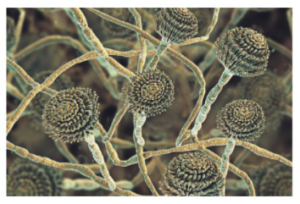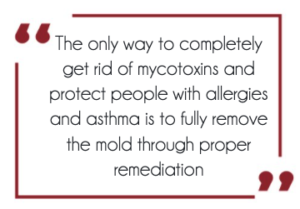A Bunch of Honey
WHEN PSEUDOSCIENCE COMES FOR MYCOTOXINS
 Have you ever walked out of a meeting or a presentation thinking, “What a bunch of hooey!”That’s how quite a few of my colleagues felt —not once, but twice! — after attending presentations on mycotoxins at this year’s Indoor Air Quality Association (IAQA) Annual Meeting & Expo. Organizers of this event aim to allow only the best people in their respective fields to present, but sometimes things fall short. This past year, two individuals who were supposed to be experts on dealing with mycotoxins and indoor air gave presentations. The only problem? These people were clearly far less educated on mycotoxins than they claimed to be.
Have you ever walked out of a meeting or a presentation thinking, “What a bunch of hooey!”That’s how quite a few of my colleagues felt —not once, but twice! — after attending presentations on mycotoxins at this year’s Indoor Air Quality Association (IAQA) Annual Meeting & Expo. Organizers of this event aim to allow only the best people in their respective fields to present, but sometimes things fall short. This past year, two individuals who were supposed to be experts on dealing with mycotoxins and indoor air gave presentations. The only problem? These people were clearly far less educated on mycotoxins than they claimed to be.
Here’s a brief biology lesson: Mycotoxins are toxins generated by actively growing mold for the purpose of killing other molds so the new mold can grow. Though mycotoxins are meant to kill other molds, there is plenty of evidence suggesting that ingesting mycotoxins can cause liver damage and other health problems in people. Of course, you’ll want to remove mycotoxins as soon as possible, and the best and only way to do this is to remove the mold through remediation. It’s that simple. Disturbingly, this wasn’t the message sent by the presenters at the IAQA Expo.
I didn’t waste time in these presentations myself, but my colleagues who did attend them told me how one presenter insisted that breathing in mycotoxins is just as dangerous as ingesting them. This is a huge stretch. This presenter didn’t seem to realize that there’s no peer-reviewed scientific research to prove this connection. Now, there is anecdotal evidence. Some people report feeling unwell after entering a house infested with mycotoxins from Stachybotrys or other molds. Certainly, these people’s responses are valid, but this doesn’t mean every individual will be affected by breathing those toxins.
 Adding insult to injury, the other presentation was from a company who claimed you don’t have to remove mold in order to eliminate mycotoxins. Their so-called remediation process could save time and money by fogging an infested space with some “magic elixir”—my terminology — to remove mycotoxins without having to go through the process of removing the mold growth. They claimed to be the only company in the country who could effectively remove mycotoxins. Never mind that mycotoxins will come back if there’s still mold there to generate toxins. They also ignored the fact that dead mold can be just as dangerous as live mold to people with allergies or asthma.
Adding insult to injury, the other presentation was from a company who claimed you don’t have to remove mold in order to eliminate mycotoxins. Their so-called remediation process could save time and money by fogging an infested space with some “magic elixir”—my terminology — to remove mycotoxins without having to go through the process of removing the mold growth. They claimed to be the only company in the country who could effectively remove mycotoxins. Never mind that mycotoxins will come back if there’s still mold there to generate toxins. They also ignored the fact that dead mold can be just as dangerous as live mold to people with allergies or asthma.
While I did learn an awful lot at this conference and enjoyed seeing some of my peers,
unfortunately, I also learned that there are still people out there who will use smoke and mirrors and pseudoscience to pretend they’re more knowledgeable than they actually are. These so-called experts were completely misrepresenting the nature of mycotoxin threats and oversimplifying the way to address them. It’s easy for folks who are well-educated in these fields to spot such imposters, but I’m concerned about regular people who haven’t spent years in the industry.
I understand why these people with their pseudoscience would sound appealing to homeowners or property managers. If a building has a major mold problem, it can cost $30,000 to remove the mold properly and repair the damage done. So if someone comes along claiming that mycotoxins are the real problem and that their magic elixir can get rid of the mycotoxins for just $8,000, then that sounds like a good deal. But this smoke and mirrors is an extreme disservice to people and can cause more harm in the long run. I don’t know how these people were allowed to speak at the IAQA Expo, but I hope they aren’t invited back.
Here’s the bottom line: The only way to completely get rid of mycotoxins and protect people with allergies and asthma is to fully remove the mold through proper remediation.

